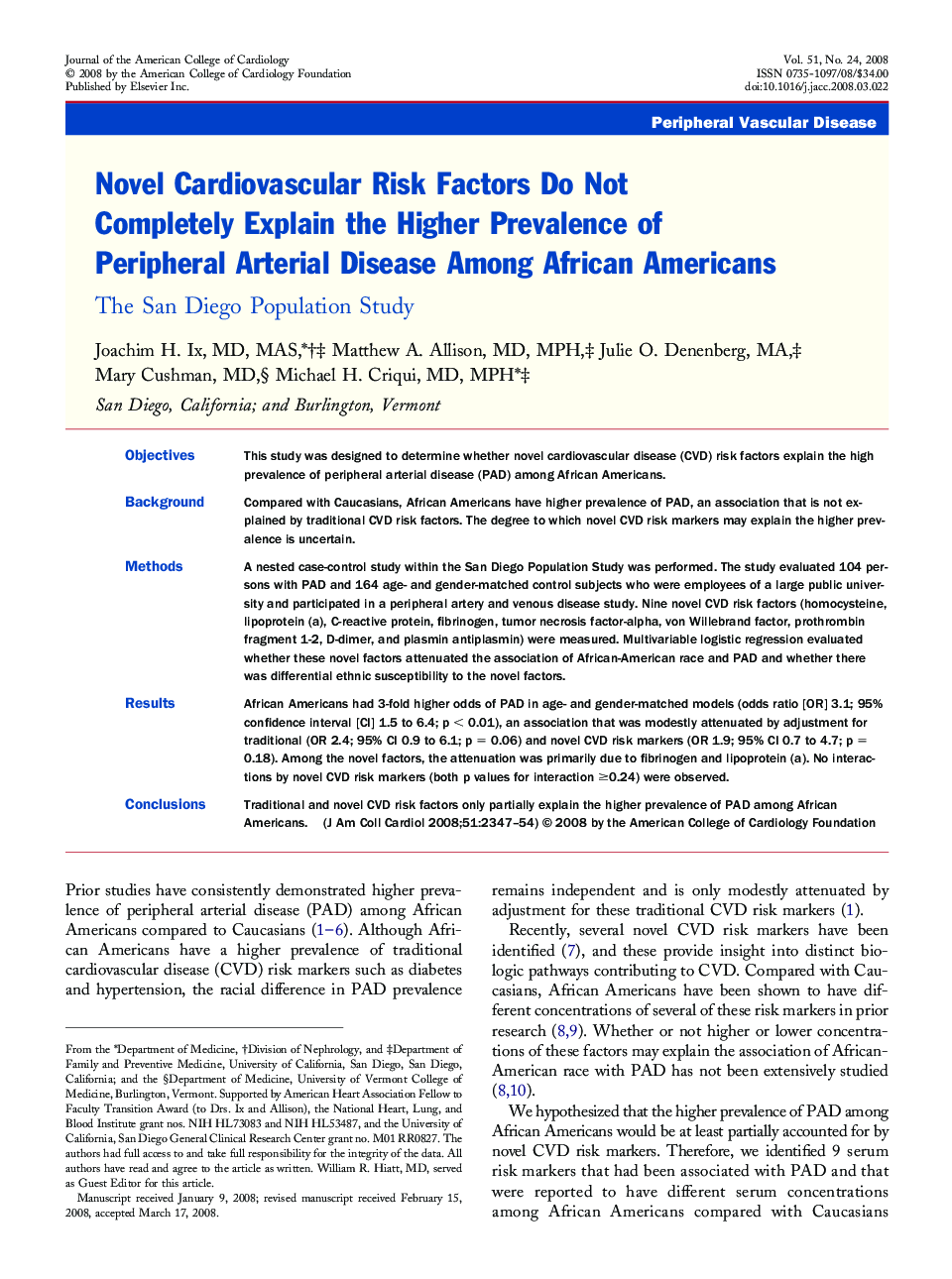| کد مقاله | کد نشریه | سال انتشار | مقاله انگلیسی | نسخه تمام متن |
|---|---|---|---|---|
| 2953143 | 1577417 | 2008 | 8 صفحه PDF | دانلود رایگان |

ObjectivesThis study was designed to determine whether novel cardiovascular disease (CVD) risk factors explain the high prevalence of peripheral arterial disease (PAD) among African Americans.BackgroundCompared with Caucasians, African Americans have higher prevalence of PAD, an association that is not explained by traditional CVD risk factors. The degree to which novel CVD risk markers may explain the higher prevalence is uncertain.MethodsA nested case-control study within the San Diego Population Study was performed. The study evaluated 104 persons with PAD and 164 age- and gender-matched control subjects who were employees of a large public university and participated in a peripheral artery and venous disease study. Nine novel CVD risk factors (homocysteine, lipoprotein (a), C-reactive protein, fibrinogen, tumor necrosis factor-alpha, von Willebrand factor, prothrombin fragment 1-2, D-dimer, and plasmin antiplasmin) were measured. Multivariable logistic regression evaluated whether these novel factors attenuated the association of African-American race and PAD and whether there was differential ethnic susceptibility to the novel factors.ResultsAfrican Americans had 3-fold higher odds of PAD in age- and gender-matched models (odds ratio [OR] 3.1; 95% confidence interval [CI] 1.5 to 6.4; p < 0.01), an association that was modestly attenuated by adjustment for traditional (OR 2.4; 95% CI 0.9 to 6.1; p = 0.06) and novel CVD risk markers (OR 1.9; 95% CI 0.7 to 4.7; p = 0.18). Among the novel factors, the attenuation was primarily due to fibrinogen and lipoprotein (a). No interactions by novel CVD risk markers (both p values for interaction ≥0.24) were observed.ConclusionsTraditional and novel CVD risk factors only partially explain the higher prevalence of PAD among African Americans.
Journal: Journal of the American College of Cardiology - Volume 51, Issue 24, 17 June 2008, Pages 2347–2354